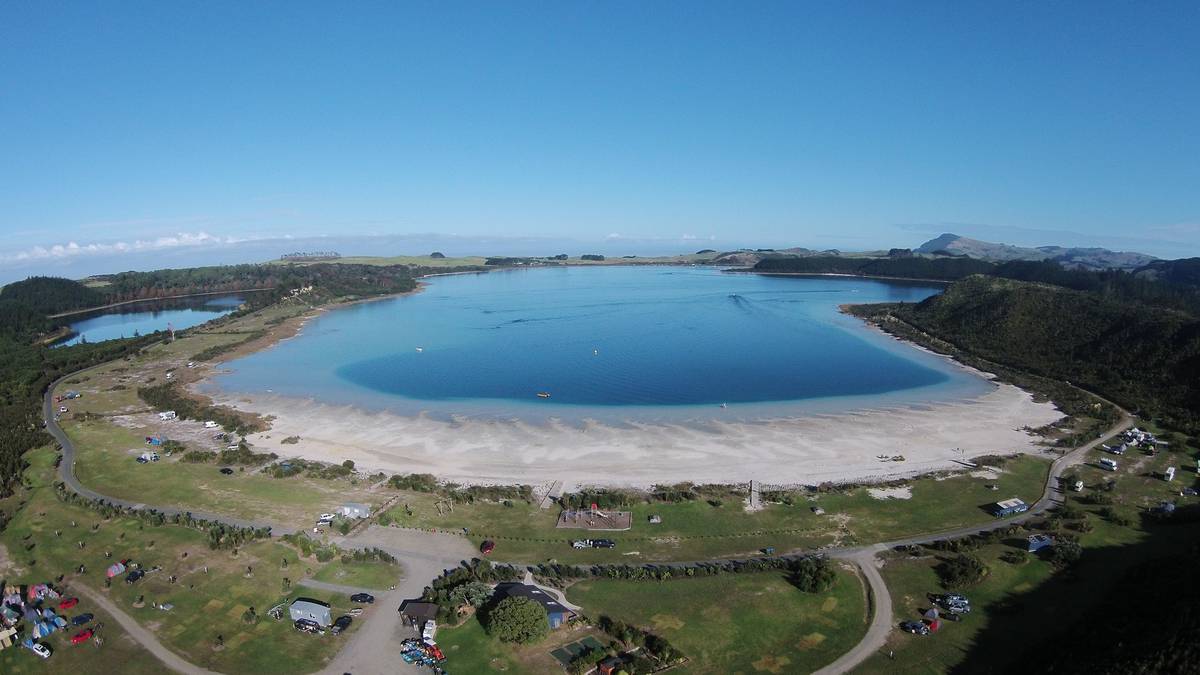Lake Taharoa, the biggest of the Kai Iwi Lakes. Photo / NZME
Lifeguards could be patrolling Kai Iwi Lakes in future – but only if a review shows it is where they are needed.
There have been several drownings and near-drownings in the lakes in recent years.
In the most recent incident, a man was pulled from the water last Saturday by an off-duty lifeguard.
The 40-year-old man got into trouble in the water at Kai Iwi Lakes on Saturday and was pulled from the water by Bailey Hudson from Waipū Cove.
Hudson had to give the Aucklander five rounds of CPR, and the man was later transported to the hospital.
In January, 4-year-old Shakib Tahir drowned in one of the lakes, as did an adult woman in 2018.
Surf Life Saving NZ Northern Region chief executive Matt Williams said any decision on patrols had to be made in discussion with the council, community and land owners.
“We don’t really have the right to just put flags down where we want to and it’s a very ad hoc approach,” he said.
“We have a role and responsibility to work with landowners and local communities.”
Surf Life Saving NZ was keen to work with the four councils in the Northland region to create a strategic plan to put future patrols where they were needed most, Williams said.
“There’s been discussion on it and I think it would be a sensible idea to review areas of Northland which don’t yet have a lifeguard service and have a need for the lifeguard service.”
Williams said there are other areas of Northland such as Taupō Bay where patrols may be necessary.
“I’d like us to have a better understanding of where patrols are needed in the future, what communities expect from Surf Lifesaving, the existing communities and new communities.”
/cloudfront-ap-southeast-2.images.arcpublishing.com/nzme/FEOS6S7TGUNMBN4R2XY3FSI5SM.jpg)
Williams said the Auckland man was very lucky on Saturday there were lifeguards around.
Although the lakes did not appear to be dangerous, with flat water and no waterfalls or currents, that was not necessarily the case, he said.
“Any body of water that has a large number of people visiting it, be it Hunua Falls, be it Kai Iwi Lakes, has an element of danger.”
Water Safety NZ chief executive Daniel Gerrard said drownings in lakes seemed to be rising.
“People are moving away from some of these more dangerous beaches and just trying to find somewhere a bit calmer but with that has been a bit of complacency.”
There have been 68 drownings around the country so far this year, Gerrard said, which was high.
“Our 10-year average is 80, so we’re tracking at potentially one of the worst summers we have ever seen.”
Water Safety NZ was trying to encourage people to take personal responsibility, and “have a think” before going out on the water, Gerrard said.
The organisation had also been working with councils around the country on appropriate signage warning of water safety risks.
Signage was present in the area where Saturday’s near-drowning happened, a Kaipara District Council spokeswoman said.
“Following a recent review, our water safety signage is being updated to align it with the Surf Life Saving NZ standards.”
The council manages Taharoa Domain, the area Kai Iwi Lakes is in, in partnership with local iwi.
The council also planned to make rescue flotation devices available in the future and train staff and community groups in their use, the spokeswoman added.
A flyer and a media campaign were also being prepared to help people make an informed decision about swimming in the lakes.




